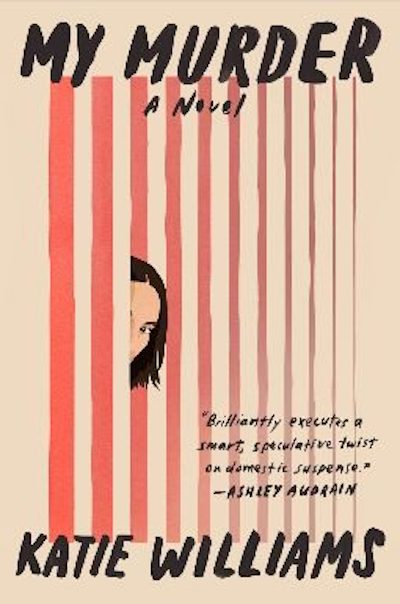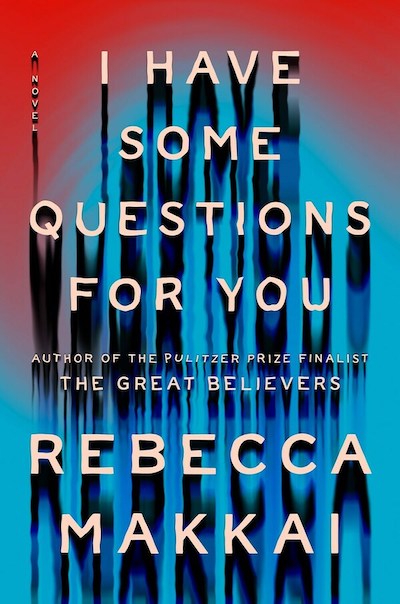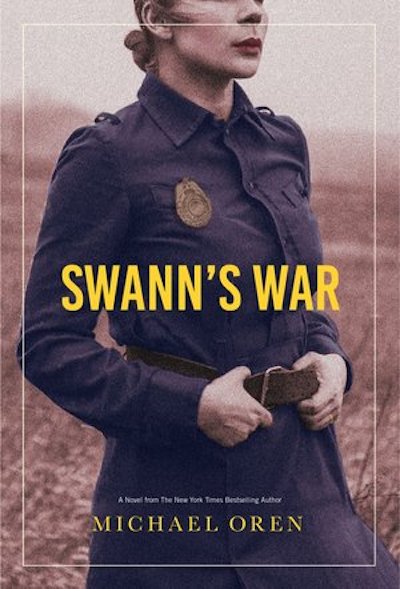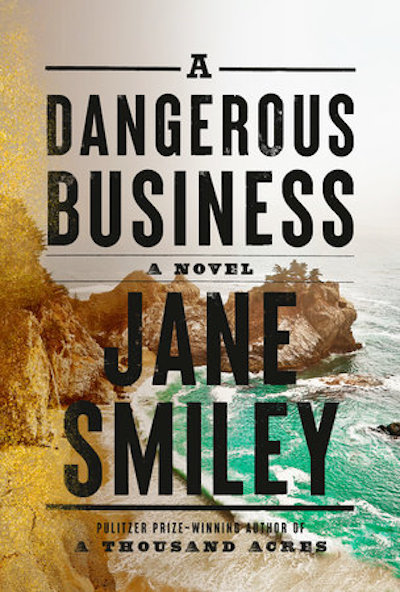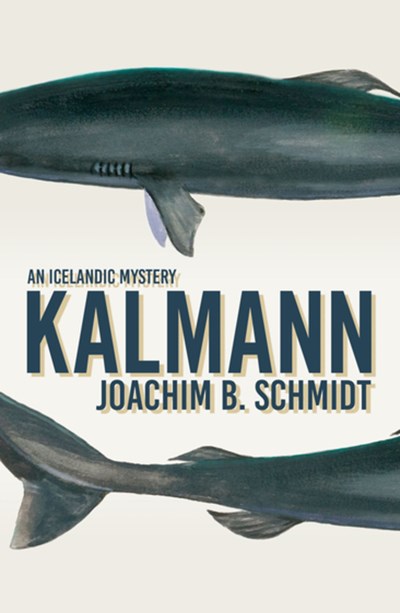I’ll be 51 this Sunday and I read two books a week. It adds up, and this is the best I’ve ever read. As it’s very far from an ordinary read , I can’t write a review as I normally would. The plot and characters are fantastic, compelling, memorable, surprising…but the book is more than anything a magic box. Trussoni also has an unsettling ability to mention everything of interest and everything that has come up lately. I thought about making a website that would emulate the ability of a pile of transparency sheets to create a composite image, and that process is mentioned. I learned about the idea of the singularity this week–the possible future time when technological growth becomes uncontrollable–and it’s there. A central theme is a kind of mythical creature I had mentioned to me recently. And the characters, and of course the author, see into the reader in other ways, with the bizarre turns in the tale perfectly allowing every nuance of the strange folks within to emerge, but also startling the consumer of this sorcery on every page. What’s the book about? Everything, but there’s a framework. A puzzle maker, who, through a brain injury, gains the remarkable ability to see “that particular kind of order that [distinguishes] a puzzle from everything else on the planet,” meets a prisoner who hands him a drawing, a puzzle he can’t even begin to unlock. It leads him to letters and a diary that describe a dangerous quest to “lift the veil between the human and the Divine and [stare] directly into the eyes of God.” There’s homework before you read this so that you can be in the right frame of mind to take in its wonder. Read Brian Selznick’s The Invention of Hugo Cabret, Shaun Tan’s The Arrival, Stephen King’s Pet Sematary, Aimee Pokwatka’s Self Portrait with Nothing, and Ray Kurzweil’s The Singularity is Near. And then clear a weekend.
Literary
Brilliant writing. Clever plotting. And a work of speculative fiction, set in a near-future world, that is totally fascinating. Lou is the fifth victim of a serial killer, leaving behind a lovely toddler and bereft husband. Until she—along with the other four victims—is brought back to life through a government program, the “replication committee,” that clones victims. Celebrities and women advocates, who took to the streets with a red gash painted across their necks—mimicking how the victims were murdered—drew attention to their plight. But understandably, adjustment to her old/new life isn’t easy, although a support group with the other women helps. Then Lou learns some things about her murder that raise some serious questions, making her wonder whom, if anyone, she can trust. Much of the beauty of this book lies in the details; Lou works as a touch therapist in a franchise in a strip mall, dispensing hugs to the emotionally needy. These sorts of facts build on each other slowly, creating a fascinating world, when all of a sudden the book takes several sharp turns that will leave the reader gasping. Addictive, fast, and smart.
Clear your calendar, silence your phone, and settle down to enjoy Laura Sims’ latest book in one joyous sitting. You deserve it and I guarantee you’ll thank me. Set among library workers in a small public library—no author has ever gotten library culture as right as Sims—this book is as unsettling as a Shirley Jackson novel with the same crazy stalker energy of a Patricia Highsmith tale. It’s time to move on for ex-nurse Margo, who leaves in her wake scores of suspicious deaths in a handful of hospitals. A library clerk position at the Carlyle Public Library gives her a chance at redemption, along with a new name, hair color, and wardrobe. And she can still help people, “not the way I helped them before, at the hospital, but still.” She’s able to keep the lid on her urges, for the most part, until two years later when Patricia, a new reference librarian, is hired. The two strike up a friendship of sorts—they live in the same apartment building—but when an elderly patron dies in the bathroom, and Margo becomes way over-excited, Patricia finds herself becoming obsessed with Margo and begins documenting her actions. The narrative alternates between the two women as the novel grows deeper, darker, and creepier, ending in a stunning, perfect climax.
This book is centered on one question: back in 1995, did Omar Evans, then a twenty-five-year-old Black man and athletic trainer, murder high school student Thalia Keith? And it’s narrated by one woman, podcaster and Thalia’s roommate, Bodie Kane. From there this novel extends in myriad directions, covers over twenty years, takes us across the country, and dives into Bodie’s past and present, as well as the questionable memories of a whole cast of characters. Yes, it’s a lot, but it’s also brilliantly successful and absolutely riveting. In 2018, Bodie was invited back to teach for two weeks at The Granby School, the elite New England boarding school she attended over 20 years ago. Her students are creating podcasts, with one choosing to revisit Thalia’s murder, a topic Bodie has kept at arm’s length. But gradually Bodie wonders if the police arrested the wrong man and the murderer is walking free. Ultimately convinced of Omar’s innocence, she reaches out to classmates for memories, photographs, any records that could help piece together that evening over twenty years ago. In many ways, what Bodie does is reopen a cold case, without any help from the cops, one that’s rich in newly found details, tacitly informed by #MeToo and Black Lives Matter. While addressing much of the book to a suspect we never meet, over the next several years, Bodie and her students raise enough questions to be taken seriously. Overlaying all this is Bodie’s personal life, including trauma from her past and a break-up with her husband, an artist accused of sexual harassment. Add to this the murders of other women that Makkai tucks around the main narrative, giving Thalia’s murder ever greater context. This is one of the books I’m most eager to share with a book group. It demands discussion.
We’re deep into the Second World War, and Archie Swann—the police officer on Fourth Cliff, a fishing island off the Massachusetts coast—is fighting in the Pacific theater. But his wife, Mary Beth, herself a cop trained by the Boston Police Department, has stepped into his position. While Archie was beloved, Mary Beth is loathed, largely because of her gender, and the easiest of tasks is a struggle. While the island has traditionally seen little crime—settling fights between drunk fishermen and resolving domestic disputes seemed to be the bulk of the work—things have changed under Mary Beth’s watch. The body of a soldier, who lived in a camp for Italian POWs on the island, is hauled up from the sea by fishermen, a murder that creates unrest among both islanders and prisoners. When that murder is followed by others, Mary Beth, whose supports are a doctor who is untrained as a coroner and a deputy who is intellectually disabled, turns to the only real help she can find: organized crime from the mainland. But the real story here is the internal one: Mary Beth’s loneliness, her longing for Archie, her need to always maintain a tough outer shell, her battle against feeling like a failure. Novels about women in the War have blossomed in the past few years, but few have the grittiness, honesty, and authenticity in emotion, language, and detail of Swann’s War.
Oates, Nathan. A Flaw in the Design. March, 2023. 304p. Random.
Gil and his wife are living their dream. He’s a writing professor at a small Vermont college, she’s an artist, their two daughters are as smart as they are well-behaved. Sure, money is tight, but life is rich. Until his sister and her husband die under distinctly odd circumstances and their only child, 17-year-old Matthew, comes to live with them. To say there’s history here is an understatement. Gil’s sister married way up, well into the realm of the one percenters. While the wealth disparity made for awkwardness, it’s Matthew’s crazy, violent behavior that sets everyone on edge. The last time the two families got together, seven years ago at the sister’s house in Montauk, Matthew tried to drown Gil’s youngest daughter. But Matthew 2.0 is completely different. He charms the daughters, ingratiates himself with Gil’s wife, and even signs up for Gil’s fiction-writing class. But while most of the world is taken in by this brilliant and handsome young man, Gil remains a suspicious outlier. Slowly Matthew begins to undermine Gil, submitting for class stories that fantasize about the death of Gil’s daughters and explain how Matthew’s own parents were killed. Eventually Gil is alone in believing that Matthew is a psychopath, creating a growing estrangement from his own family, who are convinced he’s fallen off the deep end. Yes, this is a thriller, but a deeply thoughtful one that skillfully plays at what is true, what is imagined, and how genius can be used in the evilest of ways.
A bold, ambitious, and sprawling work that can only be described as Dickensian, so rich is it in socioeconomic observation, unforgettable characters, sentimentality and violence in equal measure, and, of course, the pleasure of plot. Like any good epic, the novel opens in media res, at a horrific auto crash that kills five homeless people. Behind the Mercedes’ wheel is Ajay, loyal servant to Sunny, an enormously wealthy playboy whose riches protects him from any retribution. But Ajay, of course, wasn’t driving the car, he’s a mere prop positioned to take the fall. How did he end up here? The novel heads back to Ajay at age eight, when he was sold into servitude, his eventual meeting with Sunny in the Punjab mountains, and the move to New Delhi, where he emerges as Sunny’s servant, drug dealer, chef, and bodyguard. Here the narrative jumps to Sunny, still obsessed with his gangster father, whose corruption and violence he wants to transcend while continuously finding himself enmeshed in it. Only his lover Neda, a journalist whose passion for Sunny is outweighed by his immorality, can seemingly reach through to him. As the novel moves among these three characters, all pushed to their very edges, readers are left to wonder whether anyone will escape alive. Brilliant and engrossing, terrifying and heartbreaking, this is one of the best books of the year. Happy to follow these characters anywhere, I can only hope this is the first in a trilogy.
Few know that one of Jane Smiley’s earliest works, published in 1984, was a mystery called Duplicate Keys set in contemporary Manhattan. Here, Smiley returns to crime fiction, although now we are in a completely different locale: Monterey in the mid-19th century. Eliza Ripple moves from Kalamazoo to Monterey with her husband, who promptly gets killed in a bar fight, leaving her broke and unemployed—but hardly sad at her piggish husband’s demise. Days later she’s recruited by Mrs. Parks to join her brothel, and with no other resources, agrees. Mrs. Park runs a tight ship: the women see only one or two clients a day; have physical protection, in the form of a bouncer; and are able to ban men they deem risky. Throughout the book, it’s women who keep each other safe, whether through friendships or the environments they create. And for the first time in her life, Eliza has financial security. All is as well as can be expected until Eliza realizes that young women in Monterey are disappearing, and discovers their bodies in a creek outside of town. She pairs up with her buddy Jean, also a sex worker and quite likely a lesbian—she’s got a terrific wardrobe of menswear—and the two women use every resource they have, from their clients to Edgar Allen Poe’s stories of detective C. Auguste Dupin, to discover who is murdering the women of Monterey. Smiley takes time to describe the wild west and the magical beauty that surrounds her characters. But ever present is the vulnerability that women face and the need to take matters into their own hands.
Take a trip back to early 2000s Brooklyn in this work of literary noir that lurks on the edges of the art world. Noir novels present an investigator who’s down on his or her luck, and here it’s Dwyer Murphy—yes, the main character has the same name as the author—a former corporate lawyer who couldn’t take the hours, the billing in six-minute increments, or the colleagues. Now he’s going it alone, but he needs the odd lucrative job (even the odd shady one) to stay afloat. He takes a sad case: one party in an acrimonious divorce wants him to try to buy books off her husband; she suspects that he’s selling some of her valuable, inherited volumes and needs the proof. Two things are strange: the “books” are esoteric, early American legal pamphlets such as “Confessions of Tom Mansfield who Corrupted and Murdered His Servant,” which Dwyer had no idea were collectibles, let alone worth taking risks over. And then he faces being sued by the wife because he’s ruining her husband’s reputation. There’s no end to the rich-people twistedness here, which is both incredible and all-too believable. That’s enjoyable enough, but best is the slow-burn, quirky trip with the steadfast Dwyer, who puts one foot in front of the other until he figures out what’s going on. A kinda, sorta Thelma-and-Louise ending caps the saga, but leaves room to wonder what’s next for the lovable Dwyer.
Deeply heartfelt and gently humorous, Kalmann is as unique as its eponymous hero, Kalmann Odinsson. Self-proclaimed mayor of Raufarhöfn, a small town in Iceland’s far north, early thirty-ish Kalmann is also the town’s one remaining shark catcher and producer of hákarl, a delicacy made from fermented shark. But Kalmman’s mind works differently from most people’s. You could call him neurodivergent, but he just says that “things with me have never really gone forward.” Then one day, when hunting a fox outside of town, he comes across a large pool of blood in the snow. This leaves him completely rattled, but instead of reporting it to the police, he goes home and watches Dr. Phil. Kalmann is called in for questioning the next day; it seems that a local businessman has disappeared. While Kalmann remains sort of focused on solving the murder—while putting forth the theory that a polar bear could be the culprit—Schmidt takes us deep into Kalmann’s life, from his mixed experiences growing up to all he learned about survival from his wonderful grandfather, and from his bouts of loneliness to the challenges he has communicating with others, and vice versa. Still, the criminal element remains the rope that pulls us through the book. Schmidt’s creation of the character Kalmann is no less than masterful. Can we hope that this is just our first foray with Kalmann?


